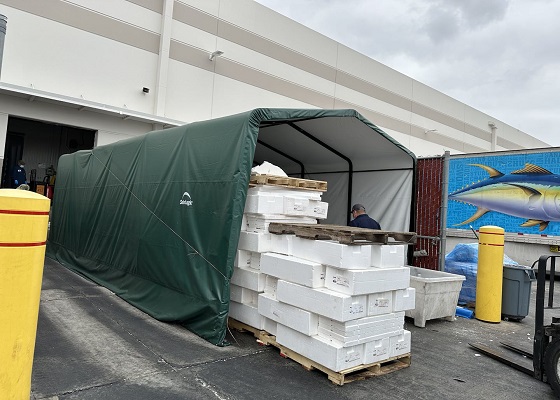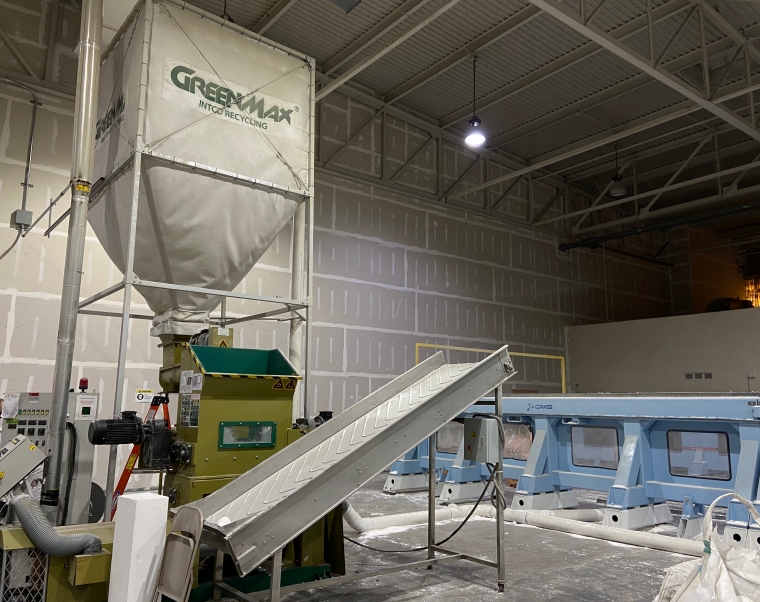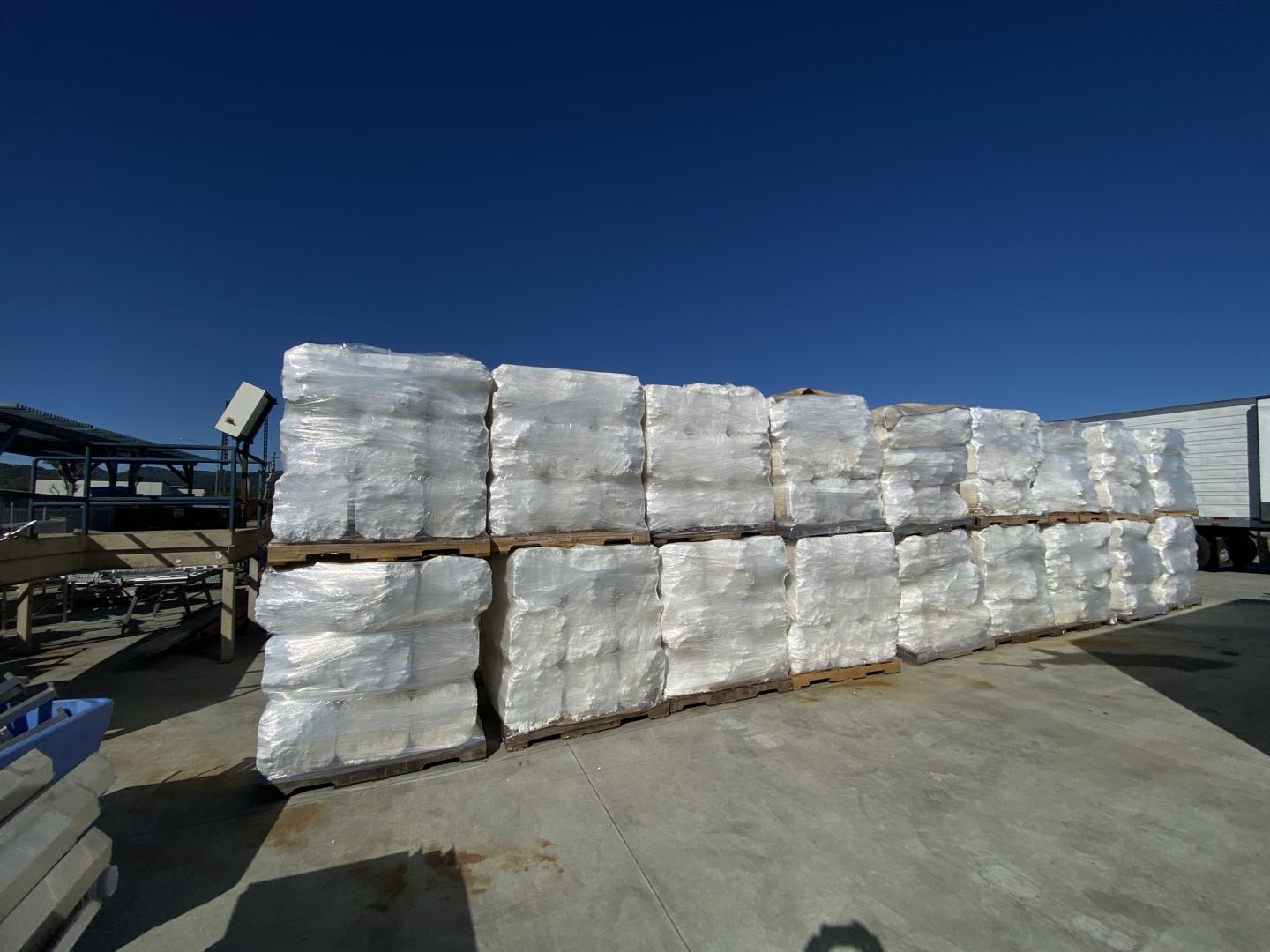Innovative Expanded Polystyrene Recycling Service | UK
Polystyrene Introduction
Polystyrene (PS) is one of the most common types of plastic derived from petroleum. It is non-biodegradable and typically very cheap to produce anywhere in the world. While it is a poor barrier to air and water vapour, it is popular because it is versatile, insulating, and cheap. It can be shaped into virtually any shape and material, including solids, foams and films; In its foamy state (created by expanding polystyrene beads with gas), it is an effective insulator, perfect for hot drinks and building insulation. polystyrene is such a popular material. It’s cheap, easy to mould into whatever shape, floats, and insulates, and the petroleum necessary is ubiquitous. The petroleum necessary to manufacture polystyrene and the simplicity of the process make it a profitable business.

Current Status of Polystyrene Recycling in UK
Only 1-2% of polystyrene waste generated in the UK is recycled. Unfortunately, many properties that make polystyrene useful backfire when it comes to its ease of recycling, making it troublesome and expensive to recycle.
The UK has also introduced many policies and regulations for polystyrene recycling and reuse, the latest legal waste act in the UK (EPA 2021) introduced a concept called Extended Producer Responsibility (EPR), which makes businesses that manufacture, import, or sell products responsible for the end-of-life environmental impact of their products, many of which contain polystyrene. While this has not been extensively applied, it forges a legal path to avoid polystyrene waste.
Other waste minimisation strategies include businesses purposefully avoiding polystyrene products, reusing them where possible, and speaking with the local council and commercial waste collection providers to see if any polystyrene recycling infrastructure is nearby.
North London Waste Authority (NLWA) has been shortlisted for an award in the prestigious MRW National Recycling Awards, which recognise innovative and creative ideas in the sector.
NLWA is a finalist in the Local Authority Success category as a result of its innovative expanded polystyrene recycling service, which has so far saved the equivalent of five double-deckers worth of waste (4.5 tonnes).
With 10,000 tonnes of polystyrene thrown away each year across the UK, NLWA launched its groundbreaking trial at the end of 2021. Residents can now take expanded polystyrene to seven of the eight reuse and recycling centres across north London, with the scheme operating on a permanent basis.
Each UK home nation has already implemented bans on single-use plastic (including many polystyrene items) like single-use plastic plates, bowls, trays, cutlery, balloon sticks, and certain types of polystyrene food and drinks containers, including cups, using their devolved regulatory powers.

Polystyrene Recycling
According to data from RECOUP, a leading authority on plastics recycling in the UK, the recycling rate for polystyrene is estimated to be around 1-2% of the total waste generated. In other words, polystyrene recycling is almost non-existent despite being technically recyclable.
This is because polystyrene recycling is problematic (i.e. bulky, often contaminated, unpredictably generated, to name a few) compared to other types of plastic, such as HDPE and PET, that exist in larger quantities and don’t have the same issues and cost-ineffective compared to glass recycling, metal recycling or cardboard recycling.
Polystyrene in foam form (e.g., EPS and XPS) is light and typically has a large surface area, making it an easy target for wind gusts. Unfortunately, inappropriately stored or transported EPS can easily blow away in the wind and become litter. This lightness also makes it bulky (EPS is 95% air), which means EPS needs to be compacted before being transported.
Polystyrene used in food packaging is typically contaminated with mixed paper, food scraps and other plastics (e.g. plastic straws). This requires prior cleaning and separation, meaning local recycling plants usually lack the resources to handle it. In contrast, plastics like 1 (soda and water bottles), 2 (detergent) and 4 (plastic bags) tend to come much cleaner and at a much more constant rate, making them much cheaper to recycle.
Polystyrene contains styrene, a suspected carcinogen, raising concerns about the safety of recycling workers and the potential release of toxic substances during the recycling process. However, the same can be said about polystyrene being released into the environment as litter or incinerated, sending carcinogenic gasses into the atmosphere.
Unlike commercial glass recycling, the quality of polystyrene cannot be maintained after recycling, limiting the number of times it can be reused into a helpful resource.

The environmental impacts of polystyrene waste
The popularity of polystyrene combined with its troublesome recycling translates to large-scale environmental impacts that were largely ignored by the mainstream until recently. This includes its infamous role in floating plastic islands, microplastics in food and water, the deaths of marine and land animals, and its role in climate change.
When polystyrene becomes litter, it stays as such for hundreds of years, even when constantly exposed to the elements. Solar radiation and acids in the environment cause polystyrene to degrade gradually, leaching harmful chemicals into the natural or built environment.
As polystyrene litter thins out, it starts breaking apart into smaller pieces that can easily be transported in waterways and into the Ocean. These are often ingested by both land and marine fauna, leading to injury, suffocation, or starvation.
Eventually, these small and persistent pieces break down to the micro-level (only discernable in microscopes) and accumulate in soils and water. For example, a study found an average of 84,030 particles of microplastics per square meter in the river Mersey near Liverpool, many of them from polystyrene. The same occurs with dust, with UK homes exhibiting, on average, 1,257 microplastic fibres per square meter.
Polystyrene is a petroleum derivative, a non-renewable resource with a significant environmental and carbon footprint. While not a significant source of demand, making polystyrene contributes to the continued use of fossil fuels, the prime cause of climate change.
Additionally, incinerating polystyrene (a large proportion is burnt because so little of it is recycled) releases toxic gases such as styrene and benzene into the atmosphere, contributing to air pollution and posing health risks to humans.
What We Can Do?
GREENMAX INTCO Recycling is a high-tech manufacturer of resource recycling, and is also the vice president unit of the Plastic Recycling Branch of the China Synthetic Resin Association (CPRRA), which innovatively opens up the whole industrial chain of plastic recycling.
GREENMAX foam recycling equipment can reduce the volume of PS foam to 1/50 and 1/90 of the original, effectively saving the storage space of waste EPS polystyrene foam, saving transportation and storage cost, and then turn it into recycled particles through recycling technology for the production of plastic products, which are widely used in the field of environmental protection frame, environmental protection picture frame, environmental protection mirror frame, footline, top corner line, outdoor floor and other indoor and outdoor decorative materials.
For more information please contact us!
